Fushimi Inari Shrine
After leaving Byodo-in, I headed back to the train station and took a train to Fushimi Inari Shrine. Like Uji, this shrine is located on the outskirts of Kyoto, in front of a mountain (Inari-san.) Below, you can see the main entrance (there's a torii behind me, when I was taking the picture).
One thing I discovered in Japan is that I really like Shinto shrines. I appreciate that they don't charge money for entrance, although I understand why famous Buddhist sites do. I like that they are often open all day and night. And I like how alive and vital they seem, even now. Anyways, it was a beautiful day when I arrived and I felt really excited. Below, you can see the two foxes on each side of the gate; Inari is the Shinto kami (deity) of fox spirits (a.k.a. kitsune) among other things.
One thing I discovered in Japan is that I really like Shinto shrines. I appreciate that they don't charge money for entrance, although I understand why famous Buddhist sites do. I like that they are often open all day and night. And I like how alive and vital they seem, even now. Anyways, it was a beautiful day when I arrived and I felt really excited. Below, you can see the two foxes on each side of the gate; Inari is the Shinto kami (deity) of fox spirits (a.k.a. kitsune) among other things.
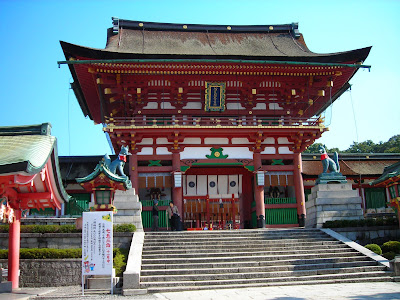
Fushimi Inari was recently featured in Memoirs of a Geisha, apparently (I didn't see it.) No doubt this is because it's remarkably beautiful. Basically, the most famous part as this shrine is the long, endless paths of torii that wind up through the mountain. They have been donated,over the centuries, by various people, families, companies, etc. for good luck. There are thousands of them, packed together so tightly that walking inside of them is like being inside a tunnel.
But not just a tunnel... a bright orange tunnel. This is the traditional color for torii. Although there were quite a few people here at the shrine, the paths are so long and winding that you can go for quite some time and not run into anyone. It's very beautiful--impossible to describe how unearthly it seems at points.
The torii are inscribed on one side with the names of the donors, and I think, the date? Or possibly some other information. My Japanese skillz are not quite up to snuff here. You will notice that they all look quite fresh and new. I saw a gentleman repainting one of them while I was here--bright shiny orange. That's one of the things about Shinto shrines--they are constantly being refreshed. Like Ise shrine, torn down and rebuilt every 20 years.
This is the entrance to one of the paths. They actually diverge in a few places, so it's not just one long path up the mountain. There are an uncountable number of torii. It's a very old shrine.
In addition to the main shrine buildings and the torii, there are a number of smaller shrines off to the side. I saw this one in the distance when I was walking along the main path and decided to investigate. It was this run-down, dirty looking shrine with a concrete torii and various garbage strewn around. But it was still really cool looking. There seemed to be a house or some kind of building in the distance but I didn't want to venture somewhere I wasn't wanted so I just stayed back at the shrine... you can see the line of torii in the distance, through the trees.
Once you got up further, shops starting appearing. I wonder how these people get up there everyday. Do they just live there? There are no roads, as far as I know. How do they get their supplies? They are restaurants, and they sell various refreshments. I just had a small, strangely shaped coca cola at one of them. It was pretty cool. They were very traditional, raised tatami mat type places, clinging to the mountainside. Very commercial, but they've probably been there long enough to classify as historical monuments themselves.
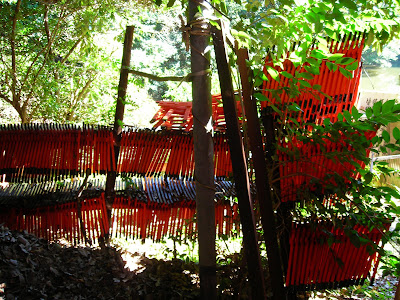
Not everyone is rich enough to sponsor a full-sized torii themselves. Here are hundreds of smaller, miniature torii, hung up alongside the road. The shrine was a really beautiful place. I was in a hurry, unfortunately, so I didn't make it all the way to the top of the mountain. I probably walked for at least half an hour, not even counting all the various stops, and I still didn't make it to the top. I'm not even sure if I was going in the right direction. I'd like to come back someday, and make it all the way to the top.
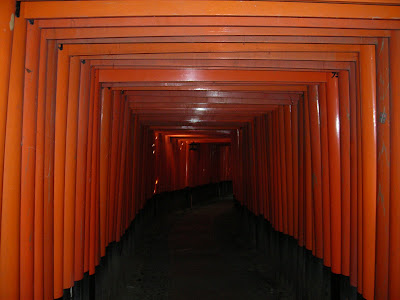
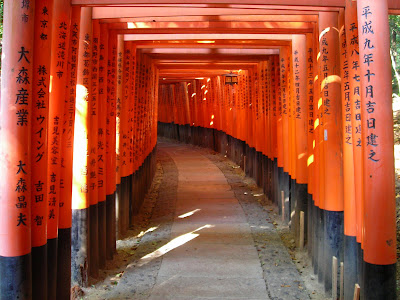
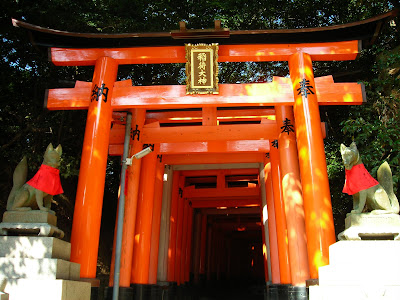
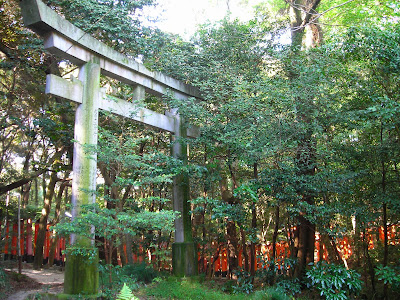
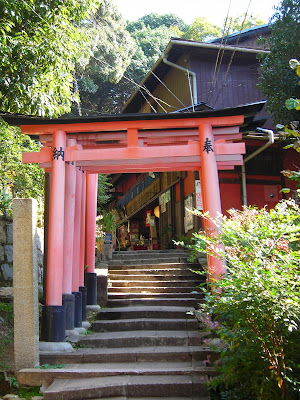
No comments:
Post a Comment